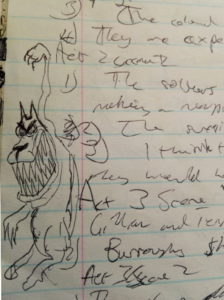
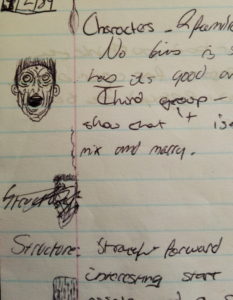
There are relatively few times in life when it’s possible to switch off your mind and enter a trance-like state without going out of your way to do so; but sitting in a classroom for a period (or better yet, a double period) of whatever subject it is that engages you least is one of those times. When the conditions are right – a sleepy winter afternoon in an overly warm room maybe, with darkness and heavy rain or snow outside and the classroom lights yellow and warm, the smell of damp coats hung over radiators and a particularly boring teacher – the effect can be very little short of hypnotic. The subject will be a matter of taste, for me the obvious one I detested was Maths, but I think that something like Geography or ‘Modern Studies’ (strangely vague subject name), where I wasn’t concerned so much with not understanding and/or hating it, would be the optimum ‘trance class’.

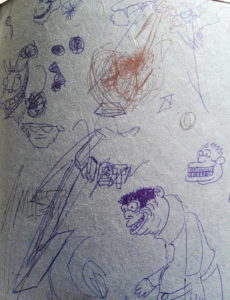
There’s nothing like school for making you examine the apparently stable nature of time; if, as logic (and the clock) states, the 60 or so minutes of hearing about ‘scarp-and-vale topography’ really was about the same length of time as our always-too-short lunch hour, or even as was spent running around the rugby pitch, then clearly logic isn’t everything, as far as the perception of human experience is concerned.
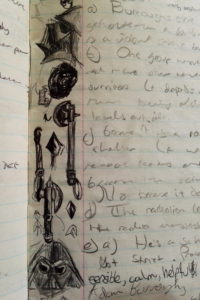
But it would not be true to say that I did nothing during these long, barren stretches of unleavened non-learning. Mostly, I doodled on my school books. Sometimes this was a conscious act, like the altering of maps with tippex to create fun new supercontinents, or the inevitable (in fact, almost ritualistic, after 7 years of Primary school) amending of the fire safety rules that were printed on the back of every jotter produced by The Fife Regional Council Education Committee. Often these were just nonsensical, but even so, favourite patterns emerged. I had a soft spot for “ire! ire! ire! anger! anger! anger!” (in the interests of transparency I should probably point out that I was almost certainly unaware at the time that ire means anger), and the more abstract “fir! fir fir! Dang! Dang! Dang!” (see?), but some things like ‘Remember Eire hunts – Eire kills’ were fairly universal. But also, there was the whiling (or willing) away of time by just doodling, in margins, on covers, or if the books didn’t have to be handed in at the end of the class, just anywhere; band logos and Eddies* and cartoon characters. Later, towards the end of my high school career, there’s a particularly detailed and baroque drawing of a train going over a bridge (something I wouldn’t have had much patience for drawing in an actual art class) which immediately summons up the vivid memory of a particularly long Geography class, and even which pen – a fine felt tip I liked but couldn’t write neatly with** – that I drew it with.
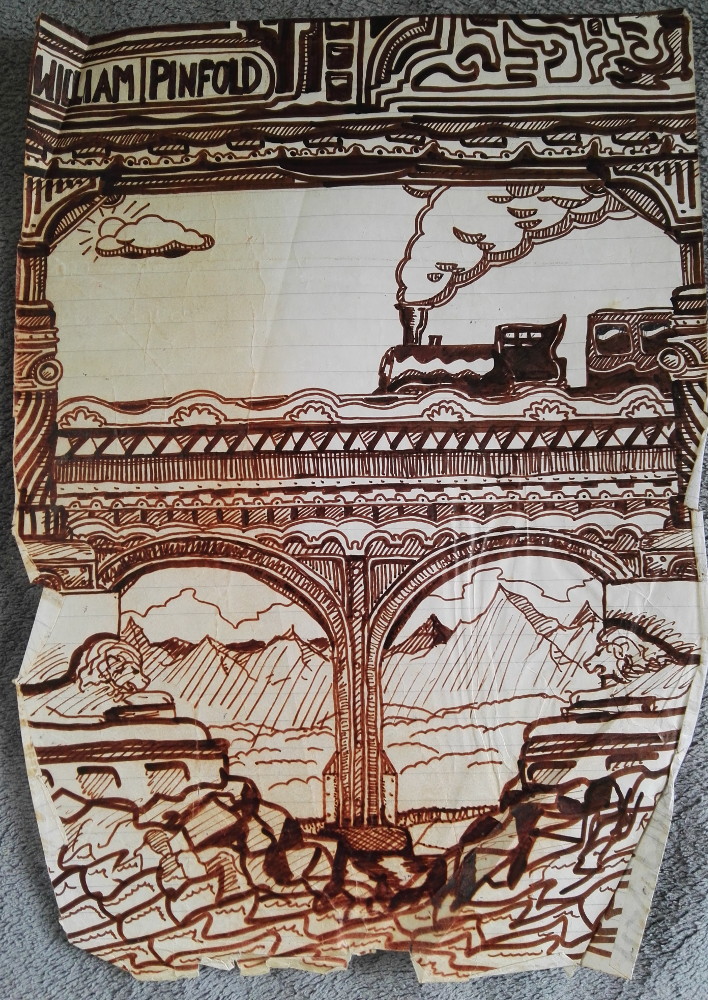
*Eddie = ‘Eddie the head’, Iron Maiden’s beloved zombie mascot, created – and painted best – by Derek Riggs
**i.e. ‘I wrote even less neatly than usual with’
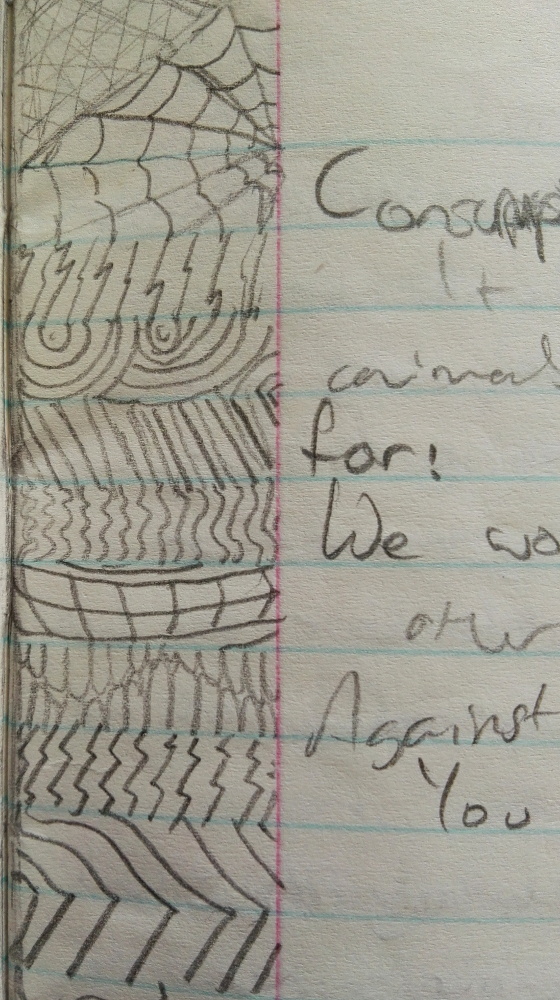
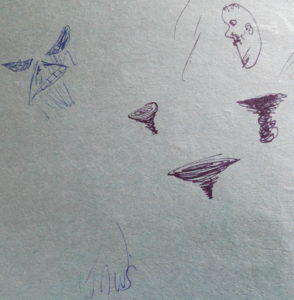
If I could recall the things I was supposed to learn in classes this well I would have done much better at school. But the point of doodling is that it’s whatever it is your hand draws when your brain isn’t engaged; or, as André Breton put it, drawings that are ‘dictated by thought, in the absence of any control exercised by reason, exempt from any aesthetic or moral concern.’*
This is in fact from his definition of what surrealism is; ‘psychic automatism in its pure state’ and later, in The Automatic Message (1933) Breton went further, influenced by his reading of Freud, specifically referencing what would later become known as art brut or ‘outsider art’ – drawings by the mentally ill, visionaries, mediums and children – as ‘surrealist automatism’. Although it might seem to – well, it definitely does – give too much dignity and importance to the time-wasting scrawls of teenagers to consider them anything but ephemeral, the strange faces, swords, cubes, eyes, tornadoes and goats that littered my school books aged 12-14 or so do seem to preserve, not just the kind of pantheon almost every child/teenager has – made up of favourite bands, TV shows, cartoon characters etc – but a kind of landscape of enigmatic symbolism that comes from who-knows-where and perhaps represents nothing more than the imagination crying for help from the heart of a particularly stimulus-free desert. But in the end, that’s still something.
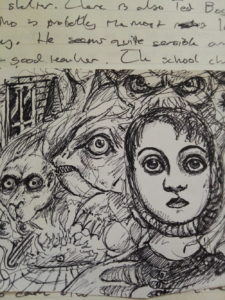
*André Breton, Manifesto of Surrealism 1924, published in Manifestoes of Surrealism, Ann Arbor paperbacks, tr. Richard Seaver and Helen R. Lane, 1972, p.26


